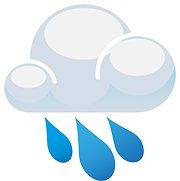Frequently Asked Questions
Q: What is the difference between "point-observation" and "point-forecast" ?
- A:
The point-forecast-api gives you the latest forecast data only.
The point-observation-api gives you the actual weather observations from physical weather stations. You can also refer to as "live weather".
Observation data are always from the past. Update frequency is in generall between 5 minutes and hourly (depending on the reporting weather station).
Data made available have sucessfully passed MeteoGroup's internal automated and human assisted quality checks.
Q: How does the API determine location?
- A: MeteoGroup APIs will deliver information from the weather station closest to the provided LAT/LON coordinates.
Q: How does the API determine location where there are substantial altitiude differences? E.g. between a valley and a hilltop?
- A: MeteoGroup APIs will deliver information from the station closest to and with the most relevant conditions to the provided LAT/LON coordinates.
Relevant means the most similar station within a close geographical proximity.
For example, if you are requesting data for a location and the nearest station is at a very different altitude, this station will not be used.
By employing sophisticaed proprietary algorhytms developed by MeteoGroup R & D, the API will seek out the closest AND most similar weather station.
Q: How can I change the units for a parameter?
- A: To change the units for any parameter in an API, re-format the request using the desired parameter unit.
Q: The parameter unit I'm looking for is not listed in the parameter list. What do I do?
- A: Let us know!
Q: Why are there additional weather codes in my response?
- A: MeteoGroup's meteorological research and experience has led to the creation of a new system of weather codes.
Codes 00-99 are the same as WMO 4677 code table. 8 new codes (-8 to -1) have been created to fill the gaps in WMO 4677.
Q: Why are the values of the "weatherCode" different for the point-forecast compared to the point-observation API?
-
The weatherCode originates many decades back to man-based observations.
Literally, people went outside, watched the sky and noted the primary weather (e.g. 79 ,ice pellets).
This is exactly what MeteoGroup offers for point observation.
For point forecast MeteoGroup has enriched this weatherCode to create more value for its customers.
The codes in the forecast api are to a great extend identical yet not fully compatible to the classical WMO codes.
Q: Are all parameters available in all time periods, such as 6-hour aggregation?
- A: No. Due to the nature of some weather parameters (for example, sunrise and sunset times) it is not possible to include all parameters with all time formats.
Please refer to the parameter list for a complete lsting of parameters and time formatting available.
If you would like other parameters to be included in time formatting that they are not currently available in, please let us know.
Q: How fast can I expect a response from MeteoGroup's API?
- A: Response time varies based on the size and complexity of the request.
As a baseline, a request for one (1) location and ten (10) parameters should be return in less than 0.5 seconds.
Q: How many locations can be downloaded per single request?
- A: To ensure a high efficient API MeteoGroup recommends using the API bulk-download feature.
The bulk download feature is required for requests with over 1000 locations.
The bulk-download feature can be used by providing a compressed list of locations via
Microsoft Point Compression Algorithm to the parameter locatedAt.
It is efficient for queries of up to 400 locations at once.
Q: The "weatherCode" can be returned for different periods but not for PT1H. Why?
- In the forecast-api the weatherCode is a mixture from PT0S (read as: one moment in time) and PT1H (read as: a period of 1 hour time).
Hence, the values for PT0S and PT1H would be equal.
Starting with PT3H, we’re providing a 3-hour aggregation.
It’s absolutely save to use the PT0S value for the first hour.
Q: Do you provider satellite imagery?
- A: MeteoGroup has satellite images available. Typically, they are provided as georeferenced GeoTIFF images.
They are not available via API as of today, but can be setup as data feed.
Q: Your API are very fast, that's a good point!
- A: Thank you, good to hear!
Nitty-Gritty
For more detailed information on this API,
check us out on Bitbucket.

